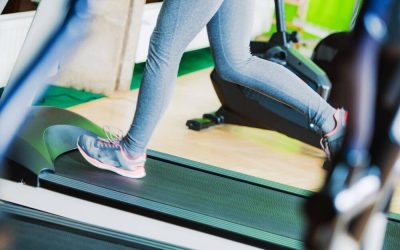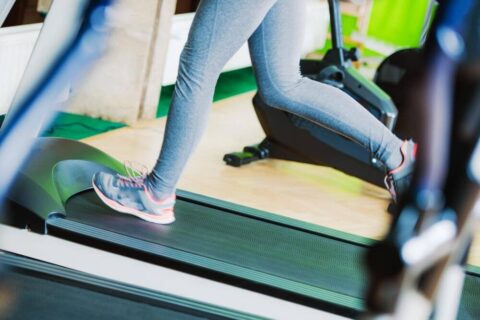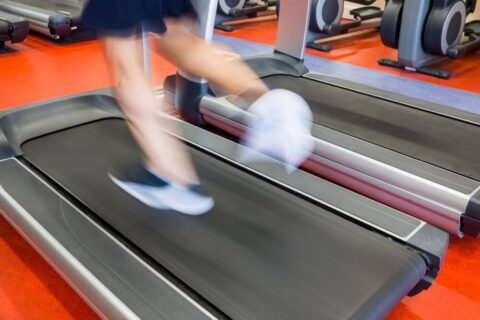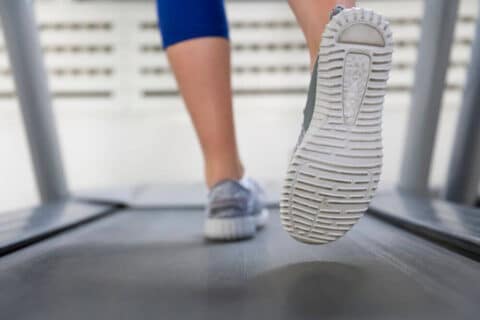If your treadmill is slowing down when you are running, a few things could be causing the issue, like a worn walking belt. First, check to see if the treadmill belt is loose. If the motor belt is loose, tighten it according to the manufacturer’s instructions. Second, check the motor’s spin and ensure it is not overheating. If the motor is overheating, it will need to be replaced. Finally, check the treadmill’s speed settings to ensure you are not accidentally running too fast.
If you run too fast, the treadmill will automatically slow down to prevent you from injuring yourself. However, if you have tried all these things and the treadmill slows down, it may be time to follow the following step.
This blog post will show you how to troubleshoot a treadmill that slows down when running.
Read More: How Tight Should a Treadmill Belt Be
Contents
Most Probable Causes for Treadmill Slows Down
The scenario may manifest in a variety of ways. For example, the treadmill may slow down as you stride on it or the machine may fail to achieve the speed you have set. Whatever the picture, it always slows down the treadmill. We’ve gathered some potential reasons for this. Let’s take a look at them.
Worn or Damaged Belt
If the treadmill belt you stepped on is a damaged walking belt or heavily worn walking belt, this is most likely why the treadmill has slowed down. The deck belt may be another factor as well. A worn motor belt causes 85 percent of treadmill failure.
Adjustment Problem of the Walking Belt
Treadmills have a walking belt that must be adjusted according to the user’s weight. If this is not done, tighter belts on the walking board will create resistance, making it harder for you to move forward, and therefore the machine will slow down due to inappropriate belt tension.
Lubrication Problem of the Treadmill Belt
Lubrication is essential for the function of a treadmill. If the motor belt is not properly lubricated, it will cause resistance, and the machine will slow down.
Controller Problem
The controller board is the “brain” of the treadmill. It controls all the functions of the machine. If there is a problem with the board, the faulty motor control board will cause the machine to slow down.
These are the most probable reasons your treadmill may be slowing down. Check them one by one and see which one is causing the problem.
If the Motor is Demagnetized
The direct cause of a treadmill slowing down is a demagnetized motor. This can happen if the machine is used frequently or if it overheats. This is because of a motor torque problem. The good news is that this problem can be solved.

Troubleshooting Treadmill that Slows down after Stepping on it
There are several things you can do to troubleshoot your treadmill.
First, check the belt to see if it is loose. If the motor belt is loose, tighten it according to the manufacturer’s instructions.
Second, check the motor and make sure that it is not overheating. If the motor is overheating, it will need to be replaced.
Finally, check the treadmill’s speed settings to ensure you are not accidentally running too fast.
Changing The Worn or Damaged Belt
The first thing you need to do is unplug the treadmill from the power source. Once it is unplugged, you can remove the safety key and belt. To do this, you will need to unscrew the front roller. After removing the front roller, you can slide the old belt off the pulleys.
To install the new motor belt, you need to thread it through the pulleys and reattach the front roller. Once the front roller is in place, you can plug the treadmill back in and turn it on. The new belt should be tight enough that you can not move it with your hand.
Solution for Adjustment Problem of the Walking Belt
If the walking belt is not properly adjusted, it will cause resistance and slow down the machine. To fix this, you must adjust the tension on the walking belt. To do this, you will need to unscrew the front roller. Once the front roller is removed, you can adjust the tension on the walking belt.
To adjust the belt tension, you need to turn the knob clockwise to tighten the belt and counterclockwise to loosen the belt. Once the belt is adjusted, you can reattach the front roller and plug the treadmill back in.
To Solve The Lubrication Problem of The Treadmill Belt
If the belt is not properly lubricated, it will cause resistance and the machine will slow down. To fix this, you will need to lubricate the belt. To do this, you will need to unscrew the front roller. Once the front roller is removed, you can lubricate the belt.
To lubricate the heavily worn walking belts, you will need to apply a small amount of lubricant to the middle of the belt. Once you have applied the lubricant, you can reattach the front roller and plug the treadmill back in.
How to Solve Controller Problem
If the gap between the belt controller isn’t correct, it may require adjustment. For example, the tread belt may have stretched out and no longer has a grip on the rollers and/or the sliding roller at the back of the running panel has moved.
You might correct this by turning off the treadmill and then changing the bolts that secure the two rollers. You’ll need a spanner; it should be with the supplies you purchased for your treadmill.
The back controller can then be loosened and moved into position, along with the tensioning. Remember that you can only change/adjust the roller at the rear of the machine; the bolts are concealed beneath the plastic overhangs.
Check to see whether the belt has tightened up on your treadmill. If not, turn the bolts a little more and try again.
Fix-It If the Motor is Demagnetized
You might need to replace the motor if the problem is with a demagnetized motor. But first, you need to try to make it work.
The first thing to keep in mind is that you should not touch the motor with any part of your body since doing so may result in serious injury. If you can’t tell if it’s spinning by looking for a tag that specifies the movement direction, look for one that points out the motor’s rotation direction.
Slide your pole down to apply pressure to the flywheel in the direction the engine is intended to rotate. You’ll need new brush replacements if you can slow down the motor with your pole-shaped object.
The next step is to look for demagnetization. Remove the motor’s bolts first before disassembling them. Then, remove the core from the casing of the motor after removing the bolts.
If they’re hard to remove, it’s a sign that the magnets are still in excellent working order. However, if the magnets fail to attract the motor core, they must be replaced.
What if the Treadmill Speeds Up and then Slows Down?
If your treadmill speeds up and then slows down, the problem is likely with the controller board. This problem can be caused by various things, such as a loose wire or a bad connection. The best way to fix this problem is to check and fix them.
These are the five most probable reasons your treadmill may be slowing down. Check them one by one and see which one is causing the problem.
Final Words
The most common reason a treadmill slows down is that the walking belt is worn or damaged. If the belt is old or broken, it will need to be replaced. Another common reason for a treadmill to slow down is that the walking belt is not adjusted properly. If the walking belt is not adjusted properly, it will create resistance and slow down the machine. Finally, if the motor is overheated, it will need to be replaced.
We hope this post was helpful and that you were able to find a solution to your problem. If you have any further questions, please post them in the comment section below. Thanks for reading!



















